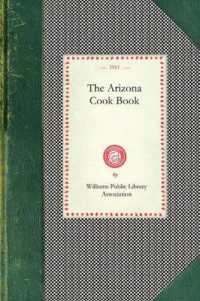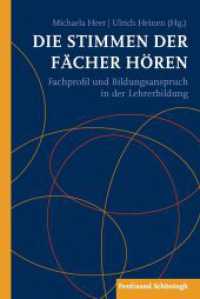Full Description
This book is the second of the two-volume collection of papers on formulaic language. The collection is among the first in the field. The authors of the papers in this volume represent a diverse group of international scholars in linguistics and psychology. The language data analyzed come from a variety of languages, including Arabic, Japanese, Polish, and Spanish, and include analyses of styles and genres within these languages. While the first volume focuses on the very definition of linguistic formulae and on their grammatical, semantic, stylistic, and historical aspects, the second volume explores how formulae are acquired and lost by speakers of a language, in what way they are psychologically real, and what their functions in discourse are. Since most of the papers are readily accessible to readers with only basic familiarity with linguistics, the book may be used in courses on discourse structure, pragmatics, semantics, language acquisition, and syntax, as well as being a resource in linguistic research.
Contents
1. Preface; 2. Introduction. Approaches to the study of formulae (by Corrigan, Roberta); 3. Part I. Acquisition and loss; 4. Repetition and reuse in child language learning (by Bannard, Colin); 5. Formulaic language from a learner perspective: What the learner needs to know (by Erman, Britt); 6. The acquisition and development of the topic marker wa in L1 Japanese: The role of NP-wa? in child-mother interaction (by Kurumada, Chigusa); 7. Formulaic expressions in intermediate EFL writing assessment (by Ohlrogge, Aaron); 8. Connecting the dots to unpack the language (by Peters, Ann M.); 9. The effect of awareness-raising on the use of formulaic constructions (by Rott, Susanne); 10. Can L2 learners productively use Japanese tense-aspect markers? A usage-based approach (by Sugaya, Natsue); 11. Formulaic and novel language in a 'dual process' model of language competence: Evidence from surveys, speech samples, and schemata (by Van Lancker Sidtis, Diana); 12. Part II. Psychological reality; 13. The psycholinguistic reality of collocation and semantic prosody(2): Affective priming (by Ellis, Nick C.); 14. Frequency and the emergence of prefabs: Evidence from monitoring (by Kapatsinski, Vsevolod); 15. Part III. Functional explanations; 16. Formulaic argumentation in scientific discourse (by Dorgeloh, Heidrun); 17. Accepting responsibility at defendants' sentencing hearings: No formulas for success (by Gruber, M. Catherine); 18. Decorative symmetry in ritual (and everyday) language (by Haiman, John); 19. Time management formulaic expressions in English and Thai (by Iwasaki, Shoichi); 20. Routinized uses of the first person expression for me in conversational discourse (by Scheibman, Joanne); 21. Author Index; 22. Subject index








